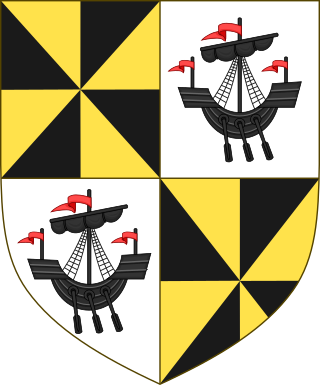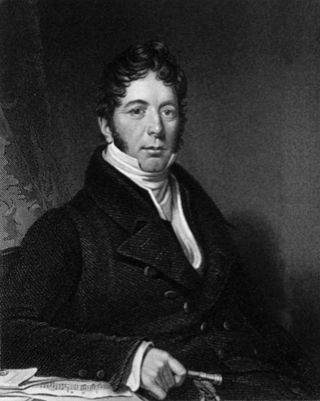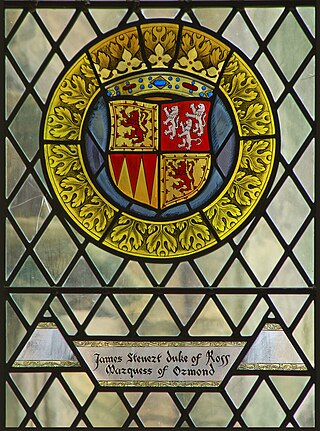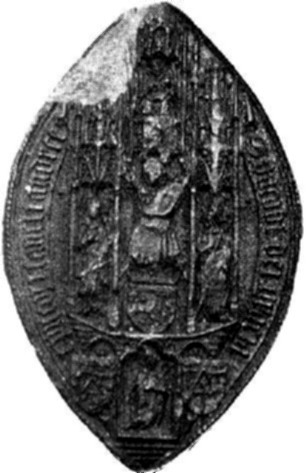
Perkin Warbeck was a pretender to the English throne claiming to be Richard of Shrewsbury, Duke of York, who was the second son of Edward IV and one of the so-called "Princes in the Tower". Richard, were he alive, would have been the rightful claimant to the throne, assuming that his elder brother Edward V was dead and that he was legitimate—a point that had been previously contested by his uncle, King Richard III.

James IV was King of Scotland from 11 June 1488 until his death at the Battle of Flodden in 1513. He inherited the throne at the age of fifteen on the death of his father, James III, at the Battle of Sauchieburn, following a rebellion in which the younger James was the figurehead of the rebels. James IV is generally regarded as the most successful of the Stewart monarchs. He was responsible for a major expansion of the Scottish royal navy, which included the founding of two royal dockyards and the acquisition or construction of 38 ships, including the Michael, the largest warship of its time.

James III was King of Scots from 1460 until his death at the Battle of Sauchieburn in 1488. He inherited the throne as a child following the death of his father, King James II, at the siege of Roxburgh Castle. James III's reign began with a minority that lasted almost a decade, during which Scotland was governed by a series of regents and factions who struggled for possession of the young king, before his personal rule began in 1469.

Gillespie Archibald Campbell, 2nd Earl of Argyll was a Scottish nobleman and politician who was killed at the Battle of Flodden.

Alexander Stewart, Duke of Albany, was a Scottish prince and the second surviving son of King James II of Scotland. He fell out with his older brother, King James III, and fled to France, where he unsuccessfully sought help. In 1482 he invaded Scotland with the army of King Edward IV of England and assumed control of the country. Scottish lords turned against him in 1483 and he fled after King Edward died. The second invasion, in 1484, was not supported by the new English king, King Richard III, and failed. He died in a duel with Louis XII of France, Duke of Orléans, by a splinter from Louis' lance.

Archibald Douglas, 5th Earl of Angus, was a Scottish nobleman, peer, politician, and magnate. Tradition has accorded him the nickname Archibald 'Bell-the-Cat' due to his association with the 1482 rebellion against James III of Scotland. He became one of the most powerful nobleman in Scotland through his influential position on the Scottish Marches, and a willingness to be involved in multiple rebellions in the reigns of James III and James IV of Scotland.
Patrick Hepburn, 1st Earl of Bothwell was Lord High Admiral of Scotland. He rose to political prominence after supporting James IV against his father, and was proxy at the King's marriage.
James Maidment was a British antiquary and collector. He passed through Edinburgh University to the Scottish bar, and was chief authority on genealogical cases.

Sir John Andrew Stevenson was an Irish composer. He is best known for his piano arrangements of Irish Melodies with poet Thomas Moore. He was granted an honorary doctorate by the University of Dublin and was knighted in April 1802.
The Battle of Sauchieburn was fought on 11 June 1488, at the side of Sauchie Burn, a stream about two miles (3 km) south of Stirling, Scotland. The battle was fought between the followers of King James III of Scotland and a large group of rebellious Scottish nobles including the future Alexander Home, 2nd Lord Home, who were nominally led by the king's 15-year-old son, James, Duke of Rothesay. James III was killed in the battle, and his son succeeded him as James IV.

James Stewart, Duke of Ross was a Scottish prince, and the second son of King James III of Scotland and his wife, Margaret of Denmark. James was heir presumptive to his brother until his death, and was Archbishop of St Andrews and Lord Chancellor of Scotland.

Thomas Cochrane, also referred to as 'Robert Cochrane' in sixteenth-century chronicle accounts, was a royal servant and alleged 'familiar' or favourite of King James III of Scotland. Chronicle accounts allege that his influence over the king incurred the wrath of the old aristocracy, culminating in a coup at Lauder in which James III was arrested and Cochrane was executed.

James Kennedy was a 15th-century Bishop of Dunkeld and Bishop of St. Andrews, who participated in the Council of Florence and was the last man to govern the diocese of St. Andrews purely as bishop. One of the Gaelic clan of Carrick he became an important figure in the government of the minority of King James III of Scotland as well as founder of St Salvator's College, St Andrews.

The Treaty of Westminster was signed on 13 February 1462 between Edward IV of England of the House of York and the Scottish John of Islay, Earl of Ross, Lord of the Isles. The agreement proposed that if Scotland was conquered by England, the lands north of the Scottish sea would be divided between the Lord of the Isles and the Earl of Douglas to be held from the crown of England, while the Earl of Douglas would hold Scotland south of the Firth.
Margaret was a Scottish warship of the 16th century.
In July 1482 an English army invaded Scotland during the Anglo-Scottish Wars. The town of Berwick-upon-Tweed and its castle were captured and the English army briefly occupied Edinburgh. These events followed the signing of the Treaty of Fotheringhay, 11 June 1482, in which Alexander Stewart, Duke of Albany, the brother of James III of Scotland declared himself King of Scotland and swore loyalty to Edward IV of England. The follow-up invasion of Scotland under the command of Edward's brother, Richard, Duke of Gloucester failed to install Albany on the throne, but Berwick has remained English ever since the castle surrendered on 24 August. The English army left Edinburgh with a promise for the repayment of the dowry paid for the marriage of Princess Cecily of England to the Scottish Prince.
The South Australian was a newspaper published in Adelaide, the capital of colonial South Australia from 2 June 1838 to 19 August 1851. Between 1838 and 1844, it was published as The Southern Australian.
Patrick Lindsay, 4th Lord Lindsay of the Byres was a reputed advisor of James IV of Scotland, and counsellor to Margaret Tudor.
James Craigie Robertson was a Scottish Anglican churchman, canon of Canterbury Cathedral, and author of a History of the Christian Church.
Katie Stevenson PhD FRHistS FSA FSAScot is a historian of medieval Scotland at the University of St Andrews, currently based in the Principal's Office. She is former Keeper of Scottish History and Archaeology at National Museums Scotland, and former director of the Institute of Scottish Historical Research at the University of St Andrews. She has written several books on medieval Scotland including the New History of Scotland book, Power and Propaganda, Scotland 1306-1488 at Edinburgh University Press. In 2014 she was awarded a research medal for the Humanities and Creative Arts from the Royal Society of Edinburgh. She won the Maclehose-Dickinson Essay Prize for 2003. Stevenson has presented radio, television and podcasts about medieval Scotland, and contributed to the London Review of Books. She is on the editorial board of Cogent OA Arts and Humanities.









